Sometimes I get excited and then impatient when I am working on a plane. It is hard for me to wait for the outcome. That was the case with this little #140. I got on it first thing after breakfast to see how the Evaporust had done. And then I ran up against that old nemesis–reality. One of my favorite sayings is:
Physics–not just a good idea; it is the LAW.
So what happens when you expect a chemical reaction to take place in a cold shop? Answer, you are disappointed because the cold weather really slows down the reaction. Somehow the body was just fine but the other parts were not progressing well. And I found an extra screw that had missed the bus. I put the extra screw in the mixture and brought it inside to warm up.
So I worked on the body by washing off the Evaporust residue and heating the body in the toaster oven. Then I slathered it with 3 in 1 oil to prevent rust. The oil penetrates the cast iron and provides a nice rust barrier. It also helps maintain the patina of the old plane.
The other parts were in much better shape after lunch and I cleaned them up. A little Scotchbrite scrubbing and some brushing made them look good again. My goal is to make the planes look like they just came out of granddaddy’s workshop. I like to polish but leave as much patina as possible. Here are the parts.

Cleaning exposed the blade markings. It is an early Stanley as expected. The blade had very little pitting and had seen only a few sharpenings. I ground a good bevel on it, flattened the back and honed the edge on 800 grit AO sandpaper.
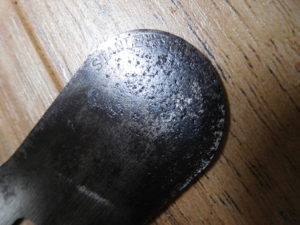
Cleaning also highlighted the patent date on the sideplate.
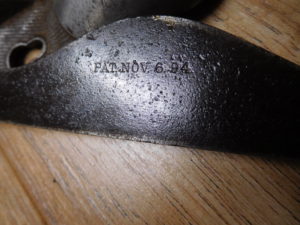
Note that the body has about half of its original japan finish remaining. That is pretty good. So now that everything is cleaned up it can all go back together.
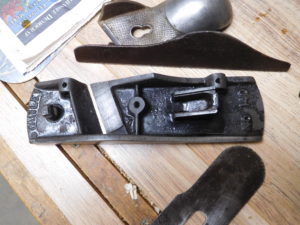
The sole has a little pitting but it buffed up nicely.
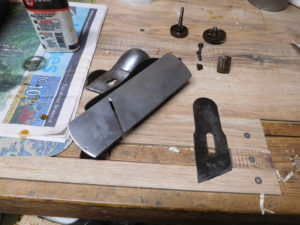
The plane parts boneyard coughed up a knob to replace the missing one. This ratty looking plane turned out very nice.
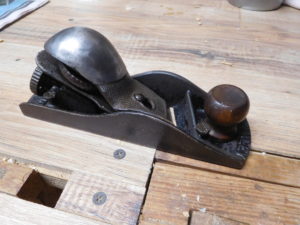
But the proof of any plane is in the shavings.
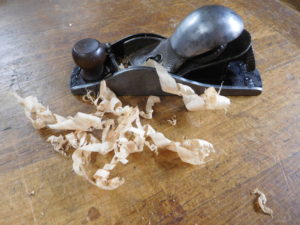
WOW! Lookit those beauties! This plane works well. It is easy to adjust and easily cuts paper thin shavings. A bonus is that skew planes cut spiral shavings that are a beauty themselves. My best guess is that this plane was made sometime around 1920. That is about the time Stanley removed the patent date from the sideplate. The wheel adjuster was added after 1900 and blade markings were changed during the 1920s. So this guy is about 100. I think he is ready for another 100 years of work.
Looks like Stanley Plane is out of “retirement” and ready to gnaw on some more wood.